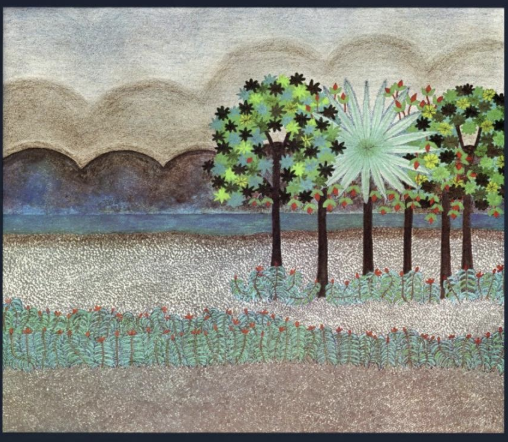
24 Jun Pat’s Top 40 before 40: Albums 2 and 3
2. Barry Elmes – Climbing
I’ve told this story a hundred times but never written it down till now. As Canadian jazz festival season is in full swing, it seems appropriate to finally pen it.
Long ago in a land where jazz was valued, touring Canadian bands would come to St. John’s NL and record at the CBC building on Water Street. These sessions were often for broadcast on JazzBeat. Katie Malloch – I don’t know where to begin. Easily one of the greatest supporters of Canadian jazz. Her show, along with Don Warner’s JazzLand and later Jeff Healey’s My Kind of Jazz were sometimes the only way folks in out-of-the-way locales could hear this music. I remember taping off these shows with religious fervor. These were my first encounters with Fraser MacPherson, Kevin Dean, Jan Jaczyk, to name just the smallest few. Like I said before, the increasing absence of physical music has created an entirely different world for young musicians. I had to work to find this music using The 3 R’s – recording from the air, raiding the cheapie bin at Sam’s, or robbing my teachers. This effort made me value the music more. I realize that is a confrontational statement, that because I had to hunt and gather for the music I somehow value it more than someone who encounters it exclusively through streaming. Buy me a pint and we can discuss it further?
Speaking of, the Duke of Duckworth was right across the street from the CBC. The Duke is a most venerable institution whose greatest accomplishment is not changing very much over the years. Republic of Doyle did a good job of recreating the pub for several seasons. Funny, when I take my shirt off in there I just get thrown out.
Bands got thirsty after a long day in the studio with Glen Tilley and Terry Winsor. A reciprocal exchange took place whereby travel and touring costs were offset by multi-evening engagements performing at the Duke. To this day, the bar has pictures of some of these stellar nights hung all around. How I wish I could’ve seen more. I recall one truly special night with the gone-too-soon Del Dako there. He played “Star Eyes.” That’s where I first heard Dave Restivo, Dick Felix, Ted Warren, and many others.
So one week in July, the Barry Elmes Quintet played. My dad used his Irish charm to bring me down. This would’ve been in 1992 so I was 13 and had just started playing trumpet. I wore a too-big tweed jacket and just generally tried to stay out of the way. Those of you who know the club, I sat on the floor in front of the band (where the pool table is now) propped up against the post. The piano is still in the club, behind the biggest TV.
Recalling my initial gut reactions to the spectactle, I think of Barry’s sensible right handed left handedness. I wondered “why didn’t all drummers set up this way?” I recall Ed Bickert and his guitar, which looked like it washed up on a beach. On a set break I asked him why he played that guitar and he replied “I played it and it worked.” Looking back, I could’ve used that time better. I asked Kevin Turcotte how much his trumpet cost – a big concern at the time. Years later, when he was my teacher, we laughed at this. Murley treated his saxophone as an effortless extension of his body. Years later we would make music together. And Steve Wallace showed the melodic possibilities of the bass in a manner I had not yet experienced.
This was also my first time in a bar. I recall the grossness of the smoke, the people yelling encouraging things to the band, as well as people not paying any attention at all.
I remember most of all the feeling of being a part of something. That may be what jazz music does most effectively. While the musicians buy into the idea of working together under the duress of form, harmony, and time so too are the audience working with the group to create an evening that won’t ever occur again. This is an idea I will continue to mull.
I bought their CD and in my lifetime I have bought about 5 copies of it. I still have one copy signed by all the band. This statistic would be impossible to verify, but it may be possible that I have listened to this record more than anyone in the band and possibly more than anyone else alive. “Feelings in Exile” was a gateway tune into Ornette. “Solar Wind” and “Fat Cat” taught me a lot about the power of Ed Bickert, that sweet mid range sound and these giant, unpredictable chords. I can’t find the music online, but above is a later version of the group with Occhipinti in the guitar chair playing a chart that developed out of something from Climbling.
Years later, many many years in fact, I look back on that night wondering if anyone in that room could’ve had any idea about the importance of that night to one particular person in the room (by which I mean me). Sometimes when I play I get caught up in the expectations of the audience, wondering if it is “good” or “could be better.” Clearly, the process of “just getting on with it” is a clearer route. One can never really understand what an audience is getting, and sometimes the reaction and influence has an effect that transcends all time and geography.
3. Eberhard Weber – Yellow Fields
I realized pretty soon that I have to do more than just play bass in the background way. So, I developed a kind of playing which only a handful of musicians accepted.
Eberhard Weber
It is a very, very rare record for me which is why I list it so early on here – rare because I often do work or otherwise listen to it somewhat passively.
Ran Blake speaks eloquently about honing the ear and listening specifically. I am completely with him on the subject of background listening:
I don’t want any music playing that serves solely as background noise. I find that it decreases my efficiency in practice and real listening. Everytime there is music or noise, it works the ears, and I feel I need to save my listening for music that is important to me.
So when I say I listen to Yellow Fields while doing something else, that does not mean it is truly audible wallpaper. The timbre, structure, and organization of the record comfortably becomes part of my daily living more than most records. I don’t live with Song X the same way at all.
Few things disappointment more than asking someone “what are you listening to?” and either a) not getting an answer or b) not getting a specific answer. I recall laying into some students about this some time ago. As I said in this first installment, the ubiquity of access to everything promotes apathy. All the music “is there” and I can get it “whenever.” But unlike checked bags, it’s about the journey – not the destination. It is amazing how many records on this list of 40 I have I got via other people.
Full credit to Jim Vivian for hipping me to Yellow Fields and while I am supposed to be writing about this music, I think more people would be keen on hearing what one super heavy bassist would say about another. Incidentally, Jim is also on Barry Elme’s “Climbing.” Here’s Jim on Eberhard:
For me, as a bass player, it’s about how he participates in the “conversation” of the band in SUCH an incredibly unique way. He is singular as a “voice” in his playing AND writing. When I hear him, from both perspectives, I don’t hear the bass or the writing – I hear HIM. That was huge for me.
Jim is bang on. Eberhard Weber is a singular voice as a bassist and a composer. His engaging forms are so alluring it is easy to forget his power as a bassist. I thought it was Jan on this record for years but it was Charlie Mariano all the time. What a deeply moving sound he gets on shennai. He uses space so effectively, impregnating every rest with a spirit of anticipation. I will address Jon Christensen’s majesty in a later post, suffice to say his trademark understatement and deep groove is all over this record.






